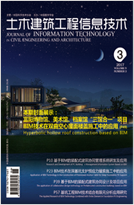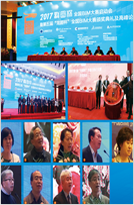2014, 6(5): 95-101.
基于BIM的建筑工程项目多利益方协同机制框架研究
天津理工大学 管理学院, 天津 300384 |
Collaborative Construction based on BIM Standard
Tianjin University of Technology, Tianjin 300384, China |
引用本文:
钟炜, 姜腾腾. 基于BIM的建筑工程项目多利益方协同机制框架研究[J]. 土木建筑工程信息技术,
2014, 6(5): 95-101.

Citation:
Zhong Wei, Jiang Tengteng. Collaborative Construction based on BIM Standard[J]. Journal of Information Technologyin Civil Engineering and Architecture,
2014, 6(5): 95-101.

摘要:“信息孤岛”现象制约着建筑行业全寿命周期协同管理效率, 各参与方都不愿意主动共享信息, 往往会导致建设后期出现大量的变更。基于统一的BIM标准, 各参与方在投资、设计、施工、竣工阶段的信息严格按照统一BIM标准进行创建、传输, 可以完全解决信息流在传输过程中的失真现象。首先, 打破传统BIM狭义认识, 从广义上将其定位为一种机制, 在此机制下在IFC标准基础上提出并建立BIM标准。其次, 引入熵值表示系统有序的程度, 基于熵和信息技术建立建筑全寿命周期信息传输模型。最后, 在BIM标准和信息传输模型的基础上提出建筑全寿命周期协同框架, 为减少建设后期的变更提供可能, 为解决建筑全过程中“信息孤岛”现象提供基础。
Abstract: "Information Isolated Island" phenomenon is restricting the construction industry life cycle management efficiency, and the participating parties are reluctant to share information, which often leads to the emergence of a large number of changes in construction.Based on the unified standard of BIM, the information of all the participants in investment, design, construction, completion stage is created and transmitted in strict accordance with the unified BIM standard, avoiding the information flow distortion during transmission.Firstly, breaking the traditional narrow understanding of BIM, its location in the broad sense as a mechanism raises and establishs BIM standards based on IFC standard in this mechanism.Secondly, the introduction of the system entropy value indicates the degree of order to establish the full life cycle of information transmission architecture model based on entropy and information technology.Finally, on the basis of BIM standards and information transmission model, a building life-cycle collaborative framework is proposed, in order to reduce post-construction changes, which provides a basis for solving the whole process of building "Information Isolated Island" phenomenon.
| [1] |
National Institute of Standards and Technology. [2009-4-13]. http://www.nist.gov |
| [2] |
梅苏良, 周与淳, 等.中国BIM协同设计的现状分析[J].科技创新导报, 2012(28):4-5.doi: 10.3969/j.issn.1674-098X.2012.28.003 |
| [3] |
曾统华. 基于BIM技术的建筑节能设计软件研制及应用[D]. 北京: 清华大学, 2012. |
| [4] |
何清华, 钱丽丽, 段运峰, 李永奎, 等.BIM在国内外应用的现状及障碍研究[J].工程管理学报, 2012, 26(1):12-16. |
| [5] |
满庆鹏, 李晓东, 等.基于普适计算和BIM的协同施工方法研究[J].土木工程学报, 2012, 45(S2):311-315. |
| [6] |
张建平, 李丁, 林佳瑞, 颜钢文, 等.BIM在工程施工中的应用[J].施工技术, 2012, 41(371):10-17. |
| [7] |
王广斌, 张洋, 姜阵剑, 张俊生, 等.建筑项目施工前各阶段BIM应用方受益情况研究[J].山东建筑大学学报, 2009, 24(5):438-459. |
| [8] |
孙悦. 基于BIM的建设项目全生命周期信息管理研究[D]. 哈尔滨: 哈尔滨工业大学, 2011. |
| [9] |
杨科, 车传波, 徐鹏, 康登泽, 等.基于BIM的多专业协同设计探索系列研究之一:多专业协同设计的目的及工作方法[J].四川建筑科学研究, 2013, 39(2):394-397. |
| [10] |
IFC2x Edition 3 final. http://www.iai-international.org |
| [11] |
Chotchai C, Wijittra M, et al.Collaborative Negotiation Behaviors in Thai Construction Projects[J].American Society of Civil Engineers, ASCE, 2011, 3:109-115. |
计量
- PDF下载量(9)
- 文章访问量(1532)
- HTML全文浏览量(858)















